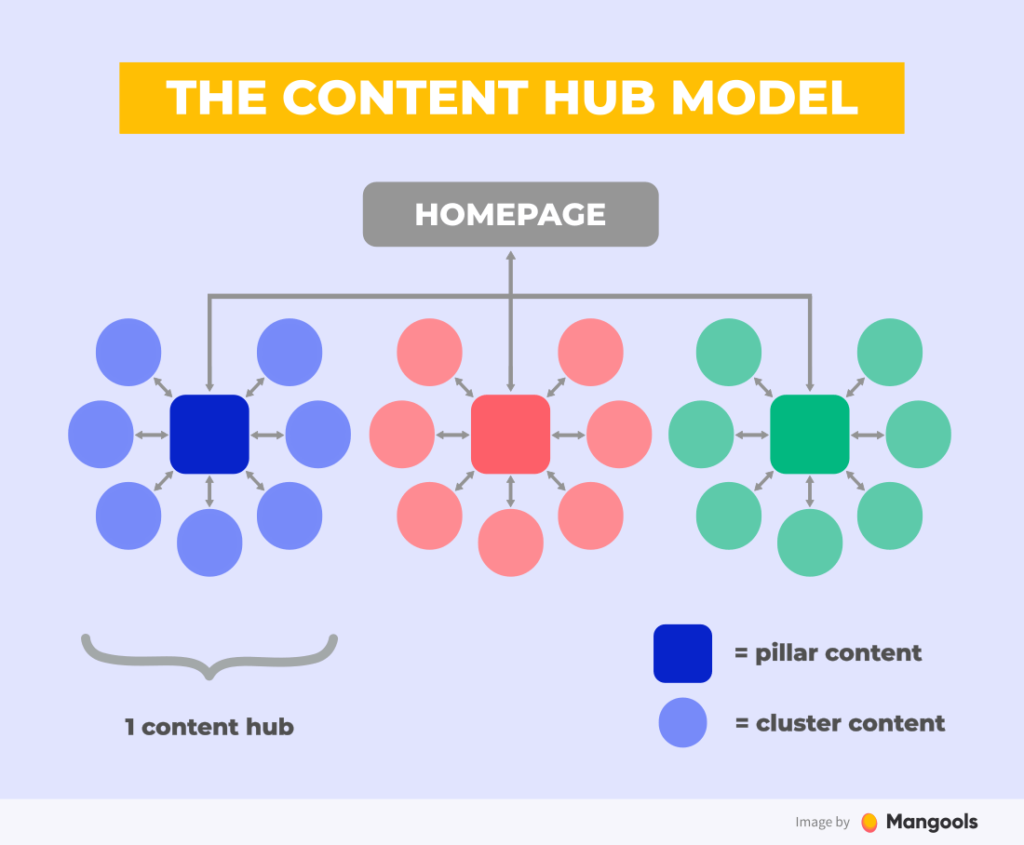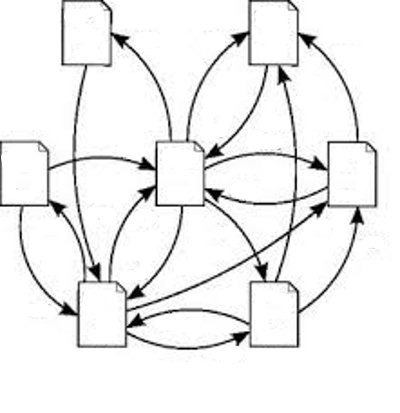Jump ahead to:
Introduction
An internal link is noting more than a link that is anchored on one page of a website, and links to a different page on the same website.
This post is part of a series and here is the link to the main glossary page.
Strategies
Since very link carries or provides PageRank and Page Authority (pick your preferred metric), being proactive and methodical about your sites internal links allows you to boost the authority of some pages, by linking to them from other pages.
Topic clusters
This is especially appropriate for topic clusters, where you have one pillar post surrounded or supported by several snippet posts.
As the posts link up and down to each other, this has the effect of boosting the authority of the pages the make up the topic cluster.

Image credit: https://mangools.com/blog/content-hubs/
Hierarchy
Here you create a hierarchy of internal links so your pillar pages (for example) receive authority from your snippet posts, and give authority to your landing pages.

SEO benefits
The SEO benefits are the boost in authority for the pages you internally link to.
Mistakes to avoid
While it’s impossible to have some web like link internal links, it’s important that web have some form of topic cluster or hierarchical link structure imposed within in.

This is one of those areas where “If you fail to plan…”.
Having links from page to page between snippet posts is both inevitable and desirable, but relative to all the pages on your site, the page with the highest authority for a given keyword phrase will rank highest in the SERP for that phrase.
And internal links lets you influence which page that is.
Measuring and monitoring
There are various tools, some of which are free.
Google Search Console
Google Search Console has a Links section that reports on all links Google knows about (which in theory should be all of them) and reports external links and internal links separately.
Ahrefs
Ahrefs has a free tool named Ahrefs Webmaster Tools (ahrefs.com/awt) in which you can run a weekly audit of your website, and in the Site Audit section there is a Links subsection. This tool also reports external links and internal links separately.
SEO Power Suite Website Auditor
This is not a free tool and it’s different in that it runs on your PC or Mac. But it’s fairly cheap and as part of their Website Auditor tool they generate what I consider to be a useful visual representation of the websites links.
One thing I like about this visual representation is you can click different webpages (represented by the dots) and the visual representation changes based on that page being “at the center”.
I find this useful for seeing just how hierarchical or web like my internal link structure is.

In conclusion
Internal links are links from pages on a website to other pages on the same website.
Not only does your website need these internal links, but it also needs an internal link structure where your snippet posts link to your pillar posts thereby passing PageRank (or Moz Page Authority depending on your preferred metric) to the pillar posts.
This internal link structure raises the authority of the posts being linked to over time.
Every post on your website needs at least one outbound internal link and ideally, each internal link should be in support of your overall link structure, which you’ve thought through in advance.
From a publishing perspective, internal links are important because they help improve page rank.
The following are some important aspects of internal links
- They provide your audience with further reading options.
- They help to improve your ranking for certain keyword phrases.
- They can help you to promote events and other paid services.
- They help Google to crawl the site.
While making links in your content, always remember the following:
- Whenever you are building your new content, make sure you include internal links in every blog post.
- Internal links pass PageRank value the way any link does.
- But remember… when adding links, don’t get carried away.